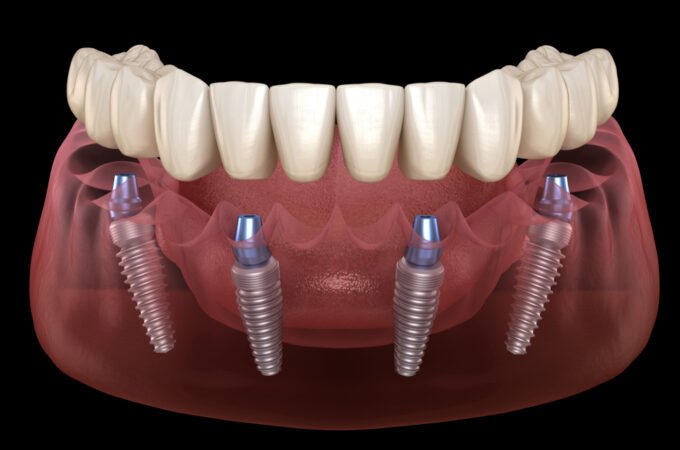
Crowded Teeth: Dealing With Consequences and Finding Solutions
In addition to being attractive, having a straight, healthy set of teeth is essential for maintaining good dental health. Malocclusion, another name for crowded teeth, happens when there is not enough room in the mouth for the teeth to line up correctly. It can impact both oral health and overall well-being.
With suitable treatment options for crowded teeth, people may maintain excellent oral hygiene, enhance speech clarity, improve bite alignment and functioning, reduce dental damage, and ultimately improve their self-esteem.
What Causes Crooked Teeth?
Crooked teeth can result from dental development irregularities, jaw difficulties, poor oral hygiene, face trauma, and inadequate dental treatment. Thumb sucking, extended pacifier usage, or tongue thrusting can pressure growing teeth, resulting in misalignment over time.
Genetic reasons also cause crooked teeth. The size and form of our jaws and the position of our teeth are hereditary characteristics. If one or both parents have misaligned teeth or a tiny jaw, their children are more likely to inherit these features. Genetic predisposition impacts tooth location and eruption patterns, making people more prone to crooked teeth.
Consequences of Crooked Teeth on Health
Misaligned teeth make it harder to clean and floss particular regions, increasing the risk of dental decay, gum disease, and poor breath. Plaque and tartar buildup in hard-to-reach spots can contribute to the decline of oral health over time, potentially leading to tooth loss and the need for expensive dental operations.
It can strain the jaw joints unnecessarily, resulting in temporomandibular joint (TMJ) problems. An inappropriate bite caused by tooth misalignment can cause discomfort, jaw pain, clicking or popping sounds, and restricted jaw movement.
The pressure on jaw joints can also radiate to the surrounding muscles and tissues, resulting in headaches, face discomfort, and even migraines.
Psychological and Social Impact
Individuals with crooked teeth are more exposed to bullying, insulting, and unpleasant comments, especially throughout childhood and adolescence. The emotional stress caused by these events can have long-term consequences for a person’s self-esteem and psychological well-being.
It can cause anxiety, making people afraid to pursue love interests or express themselves in personal circumstances. Fear of being judged or rejected because of the appearance of their teeth can hinder the creation of unique and meaningful connections.
The visible misalignment can become a source of embarrassment, making people reluctant to smile, speak, or interact with others freely.

Treatment Options for Crowded Teeth
The good news is that several treatment methods are available to deal with this problem and give them a straighter, healthier smile. You can visit experienced orthodontists like Kumra Ortho, Washington, DC, which specializes in providing complete and efficient treatments for crowded teeth. At Kumra Orthodontics, you are sure to receive high-quality dental care.
Traditional Braces
One of the primary objectives of braces in treating crowded teeth is to create space. Braces gradually move teeth into their ideal locations using little, controlled pressures. It contains brackets glued to the teeth and joined by archwires. Together, these materials help to realign the teeth progressively.
When gaps or spaces accompany crowded teeth, braces reposition the teeth. The treatment process involves closing the gaps to provide a more aesthetically pleasing and consistent dental alignment.
Ceramic braces are created from translucent or tooth-colored materials, making them significantly less obvious than typical metal braces if you are self-conscious or worried about their visibility. Lingual braces are also another option. These are affixed to the rear surfaces of the teeth and are essentially undetectable from the front.
Invisalign and Clear Aligners
Like braces, Invisalign and clear aligners apply pressure to the teeth. The treatment begins with a thorough examination that includes digital scans and X-rays to produce an exact 3D teeth model. Each new set of aligners alters the teeth’s alignment given during orthodontic visits.
One of its main advantages is the nearly undetectable look of Invisalign and clear aligners. It uses clear BPA-free plastic, making it hard to see while wearing. It makes them a perfect alternative for people who prefer a discrete orthodontic solution since they may go about their everyday activities with confidence without calling attention to their treatment.
Invisalign and clear aligners are typically worn from 6 to 18 months, depending on how crowded the teeth are. However, it is unsuitable for a more complex case, which braces can fix.
Teeth Extraction
This process involves extracting one or more teeth to create the necessary space to position the remaining teeth. It is only done on a case-to-case basis and does not always apply to all individuals. Teeth extraction is only done in severe crowding and may require additional orthodontic treatments like braces or aligners.
Before extracting teeth, the orthodontist carefully assesses variables such as the degree of crowding, tooth size, length of the dental arch, and facial aesthetics. They consider the patient’s general oral health and long-term alignment objectives.
Seek Professional Help and Find Orthodontic Solutions
Only professional orthodontic assistance can help with the consequences and effectively solve crowded teeth. Kumra Ortho offers expertise, personalized treatment plans, and advanced treatment options. Orthodontists use the latest technological advancements to provide the best care possible in providing a healthy and straight smile.




